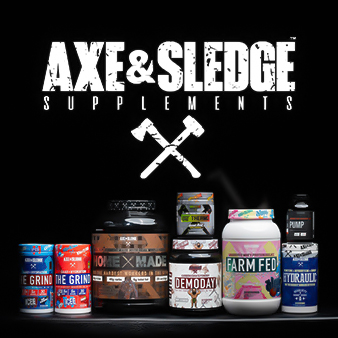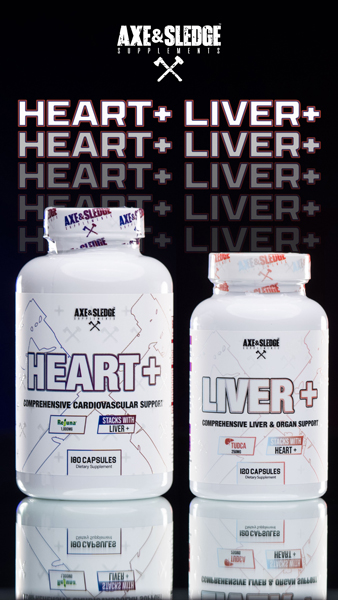It is important to know what a proprietary blend is and why the supplement companies used them. We will discuss the many facets of a proprietary blend, including what they are, why they are used and who they benefit. We are also going to look at three popular supplements that use a proprietary blend and explain why you should demand full disclosed labels.
Before we jump into the details of proprietary blends, it is important to note that there are supplement companies out there that have been using full disclosure labels for years, some even since their beginning. Companies like NutraBio have been using full disclosure labels since 2001. They are one of the few companies who are actually sending their sales force out into the market to educate the consumer and the sales staff at supplement stores like GNC. You will see a lot of positive reviews on NutraBio on our website due to their full transparency. We are big fans of full transparency.
Proprietary Blends
I will be the first to admit that when I started using supplements back in 2010 I did not know what a proprietary blend was. In fact, I didn’t even know that term existed. I would do as many of you do: read reviews on websites like BodyBuilding.com and make my decision based on that. Since being a part of the sports nutrition industry I have educated myself on the difference between proprietary blends and fully disclosed supplements. As the consumer, you need to know what you are putting inside your body. It’s the safe thing to do. It’s the smart thing to do. So why are we still spending billions of dollars on proprietary bends? It’s because we don’t know any better, and we don’t take the time to educate ourselves.
We will continue to review proprietary blends on Fitness Informant. I will admit, I have personally reviewed many supplements on this website that use a proprietary blend. I have actually given many supplements a positive review that use proprietary blends. It’s true that some proprietary blend supplements work and are very effective. However, when we review the profile or dosage we can never give it a big score because the fact is we are unsure. That brings us to our definition of what exactly is a proprietary blend…
Proprietary Blend Defined
A proprietary blend is a method supplement companies use in labeling their products. Imagine you have a cup of sugar, flour and salt all mixed together. However, you are not sure how much salt, sugar or flour you have in the cup. Do you have 1/2 cup of flour, 1/4 cup of sugar and 1/4 cup of salt? You can’t tell and you never will unless you pay for a test to determine the cup’s content. All three ingredients are the same color, and they “blend” well together. I wanted to use this simple example for you to start thinking about proprietary blends.
Now take this same idea and apply it to supplements. Supplement companies like to “stack” ingredients together and throw it on a label as one big blend. To the consumer it appears like you are getting a whole lot of 10+ different ingredients, and you just assume you are getting one packed product. Think again. But why do companies do this? Because we don’t know any better.
Why Companies Use Proprietary Blends
There are several reasons why supplement companies use proprietary blends. The majority of reasons supplement companies use proprietary blends are to save themselves money during product so they can turn a big profit when they sell the supplements. There is one reason, however, that a supplement company may use a proprietary blend that we can understand is a legitimate reason why. Let us explain four of these reasons now.
Reason 1: Marketing
Ask yourself this question: how many times have you bought a supplement because the company touted they used a certain ingredient in the product? I bet many of you have. Here’s one ingredient that many people bought products based on it’s inclusion in products: DMAA. Let’s use the DMAA ingredient as an example of how proprietary blends work in the supplement company’s favor due to marketing. Let’s call this supplement company ABC Supplements.
ABC Supplements just released a new pre-workout called “Cutting Edge Pre-Workout.” Their package design is a bright orange color that stands out on any shelf. On the front of the pre-workout it has in a big starburst “DMAA Enhanced Pre-Workout.” Right away you are thinking that this product must kick-ass because it is DMAA enhanced. You grab the product from the shelf, turn it around and look at the label. The label has three different blends: NO Boosting Blend, Laser Focus Blend and Maximum Energy Blend. Now you’re thinking that this is the best pre-workout on the planet that you are getting all three facets that a pre-workout must provide. TAKE MY MONEY!
The NO Boosting Blend contains 2,100mg of seven different ingredients, none of which you even know what they do. You’ve seen these ingredients used on other supplements so you “know” that this is legit. Ingredients such as L-Cittruline, Agmatine and Theobromine.
The Laser Focus Blend contains 400mg of five ingredients. Again, many of these you’ve seen listed on other supplements before, but none of which you know what they do. Ingredients such as Caffeine, Theanine and N-Acetyl-L-Tyrosine.
Now we’re on to the “Maximum Energy Complex.” You see 1.3 Dimethylamylamine listed on the label. This is DMAA. You also see other ingredients such as 3.7-dimethyl-1h-purine-2 6-dione (another form of Theobromie), Glucuronolactone (used a lot in energy drinks) and other names you cannot pronounce. These are scientific names so you think to yourself that this product is awesome. But your eyes are locked on the DMAA. This blend comes in at 1,500mg and includes 12 ingredients. WOW! You see that big number and you automatically associate it with DMAA and think all other 11 ingredients are just an extra addition, one of which is Dextrose (more on this in the section below). It says on the package DMAA Enhanced. All of these signals tricks your brain into thinking that this product is stacked. Therefore, you take this product to the counter and pay whatever the sticker price is. But how do you know how much of each ingredient you need?
Reason 2: Underdosing Ingredients to Save Money
Some ingredients cost a lot of money. Supplement company’s can include extremely small amounts of these expensive ingredients and toss it on the label to “trick” the consumer. Let’s go back to our previous example of ABC Supplements’ “Cutting Edge Pre-Workout.”
The consumer purchased this pre-workout based on the fact that they wanted a “DMAA Enhanced” pre-workout. There is nothing wrong with DMAA (in our opinion). In fact, many DMAA based products work extremely well. Blackstone Labs used to make a DMAA based pre-workout called “Dust Extreme.” That product contained 75mg of DMAA. In the example above, the proprietary blend has 1,500mg. It seems feasible that 75mg of 1,500mg could be DMAA. But how would you ever know?
ABC Supplements is in the profit-making business. They don’t want to spend a lot of money making the product. They want to spend their money on packaging and social media ads. So they decide to include 10mg of DMAA per serving, but they do not disclose this. This means that ABC Supplements essentially just drops a little bit of DMAA per serving when they created this mix. I know you’re thinking to yourself that a supplement company wouldn’t do this…you’re dead wrong. They do…and they do it all the time.
The next time you buy a proprietary blend product just look at your label. Do a quick Google search on some of the ingredients. You can find the proper dosage needed for many ingredients this way. Then start adding them up and compare your number to the number the supplement company uses in their blend. It’s eye opening.
Reason 3: Using Cheap Fillers
Using cheap fillers is directly tied into underdosing quality ingredients. Let’s re-visit our example of ABC Supplements’ “Cutting Edge Pre-Workout.” Specifically let’s look at the “Maximum Energy” complex which was 1,500mg of 12 ingredients which included DMAA and Dextrose.
Dextrose is a cheap carbohydrate. You can buy five pounds of Dextrose for around $20 as a consumer, now imagine what the manufacture pays. ABC Supplements does not disclose how much of these 12 ingredients that they are using in this “blend.” So they could essentially use 1,400mg of Dextrose, 10mg of DMAA and 90mg of all other 10 ingredients, but as the consumer you don’t know this and you think you are getting a heck of of product! They are able to underdose on an ingredient like DMAA and then use a cheap filler like Dextrose and then charge the consumer $40-$50 for 20-servings of this. You buy in. They cash out.
Reason 4: Protecting Their Formula From Copy Cats
As a company, through trial and error, you discover an amazing combination of ingredients that provides excellent results that no other supplement provides you would want to protect that from copy cats. The sports nutrition industry is full of copy cats. If a product proves to be effective there will be 10+ other companies lining up to copy your formula. If you are a fully disclosed product then copying this is easy. If you use a blend it makes it a lot more difficult for companies to copy you.
This is a “legitimate” reason to use a proprietary blend. It’s essentially similar to having a patent on a product. However, although you have a protected formula through a proprietary blend, other companies can easily find out what is in each serving.
Third-party companies could copy your formula by trial and error or using a third-party test. So it is not fool proof. Although this is a “legitimate” reason to use a proprietary blend, we don’t feel it is enough of an excuse to use one due to the fact that you can get it tested and find out the breakdown anyways. So you really are not protecting your product from copy cats, are you?
Many companies will claim that this is the reason they are using a proprietary blend. I wish that was true. However, 99.9% of companies do not actually have a formula they are protecting and even if they did other companies can find out what is in it through testing. Most supplement companies are using proprietary blends due to a combination of reasons 1-3 above.
We understand that our made-up product above might not seem realistic. We are going to look at three different products that use proprietary blends and break them down for you.
Case Study 1: 360 Cut PRE
[/vc_column_text][vc_row_inner column_margin=”default” text_align=”left”][vc_column_inner column_padding=”no-extra-padding” column_padding_position=”all” background_color_opacity=”1″ background_hover_color_opacity=”1″ column_shadow=”none” column_border_radius=”none” column_link_target=”_self” width=”1/2″ tablet_width_inherit=”default” column_border_width=”none” column_border_style=”solid” bg_image_animation=”none”][vc_column_text]360 Cut PRE is a very popular pre-workout. As of this article it had 170 reviews on BodyBuilding.com with an average rating of 8.9 out of 10.360 Cut PRE uses two different blends in this pre-workout: 360Energy & Pump Blend and 360Muscle Power & BCAA Blend.
Let’s break down both blends in terms of dosage and ingredients to “expose” this supplement for you.
360Energy & Pump Blend – 5,540mg
Creatine Monohydrate, L-Tyrosine, Caffeine Anhydrous, Glucuronolactone, L-Citrulline, L-Carnitine, L-Carnitine Tartrate, Magnesium Creatine Chelate, L-Glutathione, Adenosine 5′ Triphosphate Disodium, Beet Root Extract[/vc_column_text][/vc_column_inner][vc_column_inner column_padding=”no-extra-padding” column_padding_position=”all” background_color_opacity=”1″ background_hover_color_opacity=”1″ column_shadow=”none” column_border_radius=”none” column_link_target=”_self” width=”1/2″ tablet_width_inherit=”default” column_border_width=”none” column_border_style=”solid” bg_image_animation=”none”][image_with_animation image_url=”3441″ alignment=”center” animation=”Fade In” border_radius=”none” box_shadow=”none” max_width=”100%”][/vc_column_inner][/vc_row_inner][vc_column_text css=”.vc_custom_1509582533083{padding-bottom: 24px !important;}”]The 360Energy & Pump Blend uses 11 ingredients to make up the 5,540mg. Supplement companies like to use milligrams because it’s typically how we see ingredients broke down, but also because they can use a large number in the thousands. It makes your mind work. Let’s put 5,540mg into grams: 5.54g.
The first ingredient listed in creatine monohydrate. Studies have shown, consistently, that 5g of creatine monohydrate is effective for supplementation. If this was properly dosed that would mean that there is 540mg left to spread across 10 ingredients. So we can safely assume that it is underdosed on creatine monohydrate (plus this is a cheap ingredient).
Let’s look at the second ingredient: L-Tyrosine. This ingredient is an amino acid used in a lot of pre-workouts. If you look at the proper dosage of this ingredient studies show that you should consume 100-150mg per kg of bodyweight. If you are 200lbs that means you are 90kg which means you need about 9,000mg of L-Tryrosine to be effective. This is 9g. You know that this pre-workout does not contain that.
L-Cittruline should be dosed anywhere from 3-6g per serving. L-Carnitine, to be effective, should be at least 1,500-3,000 per serving. I think the writing is on the wall here.
360Energy & Pump Blend – 5,225mg
L-Taurine, L-Alanine, Potassium Phosphate, Di Magnesium Malate, L-Valine, L-Leucine, L-Isoleucine, L-Glutamine
We start with L-Taurine, which a proper dosage of this is 500-2,000mg. That takes quite the big chunk out of this “blend” right away.
The main area of focus on this blend is the BCAA portion of it. Studies have shown that a 2:1:1 ratio is the best. So that would be two parts L-Leucine to one part L-Valine and L-Isoleucine. If this product had 2g of L-Leucine that would then mean there is 1g of each L-Valine and L-Isoleucine which is a total of 4g. We can make the determination that this product does not contain much BCAAs.
Then there is Glutamine. Glutamine speeds up recovery. A typical dosage of L-Gluatamine is 5g. Are you with me here? I think you get the idea that this product is underdosed in many ingredients. Even the cheap ingredients like L-Gluatmine.
Case Study 2: Athletic Edge Nutrition APE
[/vc_column_text][vc_row_inner equal_height=”yes” content_placement=”middle” column_margin=”default” text_align=”left”][vc_column_inner column_padding=”no-extra-padding” column_padding_position=”all” background_color_opacity=”1″ background_hover_color_opacity=”1″ column_shadow=”none” column_border_radius=”none” column_link_target=”_self” width=”1/2″ tablet_width_inherit=”default” column_border_width=”none” column_border_style=”solid” bg_image_animation=”none”][vc_column_text]APE by Athletic Edge Nutrition is a very popular Testosterone Booster. When I first started getting into supplements I purchased this quite a bit. I bought it because the BodyBuilding.com rating was great. As of this writing APE rates 8.9 out of 10 based on 228 reviews.APE uses one blend: APE Pro-Testosterone/Anti-Estrogen Complex Blend containing seven different ingredients (one of them being Black Pepper Extract which helps with absorption).
APE Pro-Testosterone/Anti-Estrogen Complex Blend – 1,305mg
GlycoCarn® (Glycine Propionyl-L-Carnitine Hydrochloride), TestoSurge (Fenugreek Extract 80% Glycosides) (Trigonella Foenum Graecum) (Seed), Maca Extract 4:1 (Lipidium Meyenii) (Root), Indole-3 Carbinol, EuryGold (Std. To 28% Glycosaponins, 20% Polysaccharides) (Eurycoma Longifolia) (Root), Bioperine® (Black Pepper Extract) (Std. To 95% Piperine) (Piper Nigrum) (Fruit)[/vc_column_text][/vc_column_inner][vc_column_inner column_padding=”no-extra-padding” column_padding_position=”all” background_color_opacity=”1″ background_hover_color_opacity=”1″ column_shadow=”none” column_border_radius=”none” column_link_target=”_self” width=”1/2″ tablet_width_inherit=”default” column_border_width=”none” column_border_style=”solid” bg_image_animation=”none”][image_with_animation image_url=”3442″ alignment=”center” animation=”Fade In” border_radius=”none” box_shadow=”none” max_width=”100%”][/vc_column_inner][/vc_row_inner][vc_column_text css=”.vc_custom_1509582643403{padding-bottom: 24px !important;}”]First, know that 1,305mg is only 1.3g of this product. This is based on two capsules. The first ingredient, Glycine Propionyl-L-Carnitine Hydrochloride, has shown to increase natural testosterone levels. However, studies indicate that these results were based on supplementing with 2g of this. Sure, if you take one serving 2x per day you could essentially get 2g but then you’d be left with 610mg of the other ingredients.
Another popular testosterone boosting ingredient used in APE is Maca Root. Maca is typically supplemented at 1,500-3,000mg per day to be effective. If you included this at a proper dosage plus the Glycine Propionyl-L-Carnitine Hydrochloride you are already over the serving size dosage.
The same can be said for Fenugreek. This is used in a lot of testosterone boosters. Proper dosage of Fenugreen is 500-600mg per day for effectiveness in increasing your body’s natural test levels. The conclusion we can make is that APE is really underdosed to be an effective testosterone boosting supplement.
Case Study 3: BSN Syntha-6
[/vc_column_text][vc_row_inner equal_height=”yes” content_placement=”middle” column_margin=”default” text_align=”left”][vc_column_inner column_padding=”no-extra-padding” column_padding_position=”all” background_color_opacity=”1″ background_hover_color_opacity=”1″ column_shadow=”none” column_border_radius=”none” column_link_target=”_self” width=”1/2″ tablet_width_inherit=”default” column_border_width=”none” column_border_style=”solid” bg_image_animation=”none”][vc_column_text]BSN’s Syntha-6 Protein is one of the most popular proteins on the market today. It is rated 9.2 out of 10 at BodyBuilding.com based on an astounding 3,996 reviews! Believe it or not, protein powders can use “blends” as well. In Synth-6’s case, it uses a “matrix” aka blend.
This is important to note in proteins because certain types of proteins can be expensive to make if you’re the manufacture. This protein retails for $50 for five pounds, typically of a protein powder.
Protein Matrix – 22g
Whey Protein Concentrate, Whey Protein Isolate, Calcium Caseinate, Micellar Casein, Milk Protein Isolate, Egg Albumin, and Glutamine Peptides
BSN will tell you that they use these different protein sources for different absorptions rates (fast digesting and slow digesting proteins). That is a legitimate excuse, but it would also be legitimate if they told us how much of each we are getting. Take a look at MHP Super Whey Protein Plus, it has a protein complex containing three sources of protein that equal 25g. They go one-step further and tell us that out of that 25g you are getting 12g from whey protein hydrolysate, 8g from whey protein isolate and 5g from whey protein concentrate.
Full Disclosure
You may recall in the beginning of this article we talked about full disclosure labels. This is the trend that many companies are going because the consumer is demanding it. Full disclosure is exactly how it sounds, each ingredient is listed on the label along with the dosage of each ingredient. This does not mean that each fully disclosed supplement is properly dosed. In fact, many of them are still underdosed, but it takes the guessing out of the game. You know exactly what you are getting per serving. This is responsibility on the part of the supplement company and the consumer. Let’s take a look at a case study to show you the difference.
Case Study 1: NutraBio PRE Extreme
[/vc_column_text][vc_row_inner equal_height=”yes” content_placement=”middle” column_margin=”default” text_align=”left”][vc_column_inner column_padding=”no-extra-padding” column_padding_position=”all” background_color_opacity=”1″ background_hover_color_opacity=”1″ column_shadow=”none” column_border_radius=”none” column_link_target=”_self” width=”1/2″ tablet_width_inherit=”default” column_border_width=”none” column_border_style=”solid” bg_image_animation=”none”][vc_column_text]NutraBio has been doing fully disclosed labels since 2001 (they initially did propriety blends until they realized that it was not benefiting the consumer). You may have seen many positive reviews from us on this company. In fact, it is one of our top brands. We are fans of NutraBio because of their use of high quality ingredients at proper dosages. How do we know? They list them out on their label.
PRE Extreme contains seven “matrix” in their pre-workout but each one is broken down to the individual ingredient. For the purpose of this case study we will look at two of the seven.
ATP Power, Strength & Recovery Complex – 9g
L-Leucine (fermented natural, HPLC) – 3.5g
Betaine Anhydrous (trimethylgycine, HPCL) – 2.5g
PharmaPure Creatine Monohydrate – 2g
Creatine HCI – 1g
You can look at this and see that these four ingredients equal of 9g. You may recall that we talked about Creatine Monohydrate earlier and that an effective dosage is 5g. PRE-Extreme contains 2g. So you know that it is not the proper dosage of Monohydrate, but you also get 1g of Creatine HCI, which studies show you don’t need a full 5g to be effective. Even if this was underdosed in areas, you would know.
Focus & Drive Stimulation Complex – 1.9g
N-Acetyl-L-Tyrosine (HPLC) (NATL) – 1.2g
Caffeine – 350mg
– Caffeine Anhydrous (HPLC) – 250mg
– Infinergy (as 133mg di-caffeine malate yielding 100mg of caffeine) – 100mg
TheaPure L-Theanine (HPLC) – 300mg
N-Methyl Tyramine (HPLC) – 50mg
Hordenine HCI (HPLC) – 50mg
Yohimbe HCI – 4mg
Huperzine A (HPCL) (as huerzia serrata leaf standardized extract) – 100mcg
NutraBio discloses the exact dosage of each ingredient in this complex. They also go one-step further. They disclose where some of the sources came from. Take Infinergy for example. They break it down as far as saying that 133mg actually yields 100mg of caffeine. You don’t find this everywhere. NutraBio does it right.
Final Takeaways
The point of this article is not to tell you that proprietary blends are not effective supplements. The point is that as the end-consumer you should demand fully disclosed labels. You should want to know everything you put inside your body. You’ve earned that right.
As mentioned earlier, we will continue to test and review proprietary blended supplements. Some of them may score very well overall. However, the profile and dosage ratings will always take a hit since we cannot accurately tell how much of each ingredient is being used.
At the end of the day it is your money. You spend it how you want. Our job is to help educate you on the supplements so that when you spend your hard-earned money you are buying something that works. The chances are very high that a fully disclosed product will always rate higher than a proprietary blend. Why? Well if you are a fully disclosed product you want to dose the product very close to the clinical dosage or accepted dosage because anyone can research any particular ingredient you use.
If you have any questions regarding proprietary blends or fully disclosed supplements please leave a comment in the comment section below. We would love to help![/vc_column_text][/vc_column][/vc_row]







